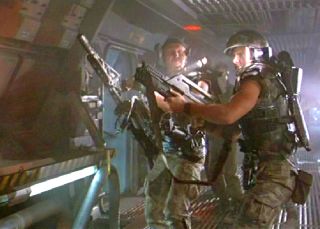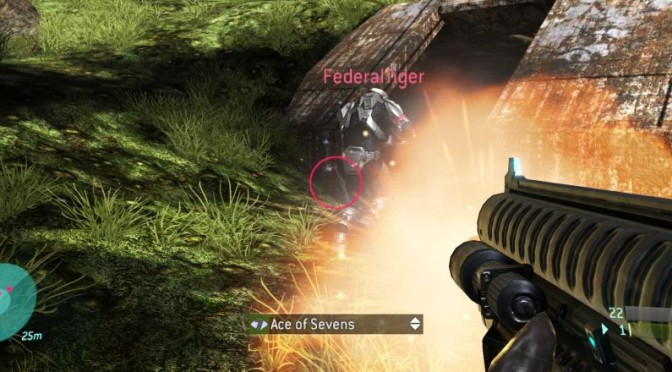 Last week I got a nagging feeling that I needed to catch up on some of the latest games I’d played and enjoyed Grand Theft Auto IV, as well as some other open-world and RPG titles, but occasionally there is a “huge” title that I just plain miss. This fall was a busy time… while I’d played Bioshock and some (but not enough) of Assassin’s Creed and Mass Effect, I’d completely breezed by Halo 3. As a long-time shooter fan/developer I figured I owed it to myself to put in a few hours and catch up with what’s held up as state-of-the-art.
Last week I got a nagging feeling that I needed to catch up on some of the latest games I’d played and enjoyed Grand Theft Auto IV, as well as some other open-world and RPG titles, but occasionally there is a “huge” title that I just plain miss. This fall was a busy time… while I’d played Bioshock and some (but not enough) of Assassin’s Creed and Mass Effect, I’d completely breezed by Halo 3. As a long-time shooter fan/developer I figured I owed it to myself to put in a few hours and catch up with what’s held up as state-of-the-art.
As I played through the first few levels, I got reminded of weird thing that always bothered me with the Halo series. The weapon you start with, the Assault Rifle, always starts the game on the wrong foot for me. It always felt anemic and ineffective against enemies, and the third installment wasn’t a whole lot better. I have no doubt that some of this might be a design choice, since it would be foolish to give the player a powerful weapon at the start of the game. Of course you need a lot of room for growth so that the player feels a sense of achievement as he/she finds new weaponry. However, for a weapon so obviously inspired by the Pulse Rifle from Aliens (one of the coolest movie guns ever), it’s always been tremendously disappointing to have my anticipation dashed… The gun looked and sounded so subdued and had little apparent effect on my opponents.
C’mon, watch this and tell me that you don’t want that rifle to be this badass sounding.
While I got past it and am now churning through Halo 3, the experience got me thinking about what elements make up a weapon that is satisfying to wield. Sure, making a weapon do more damage is what you’d expect, but there are a large number of intangibles that can add to the player’s shooter experience without disrupting the balance of the game.
Most of my roots are from Raven Software, where shooters are (mostly) a way of life. If there’s one thing that members of the studio preached constantly, most particularly my boss Brian Raffel, was that “the player must feel powerful”. It seems obvious, but a lot of times games don’t do enough to make the player feel like the gun in his/her hand is an unstoppable tool of destruction. This is about gratification and player expectation… Movies have trained audiences to expect that guns shoot massive plumes of flame and sparks and are accompanied by tremendous booming sound. In comparison, the sharp, loud crack or pop of a real gun can be a disappointment (although obviously they are intimidating nonetheless in person). Usually just modeling the audio and visual reality of a weapon isn’t quite enough.
Most games that have contemporary-style guns have a few standbys in their arsenal … the pistol, the machinegun or automatic rifle, and the shotgun. As an exercise, I cracked out a bunch of different first-person shooters and captured their weapons on video for the purposes of comparison. These games were:
- Halo 3 (Xbox 360, 2007)
- Resistance: Fall of Man (Playstation 3, 2006)
- Half Life 2 (PC, 2004)
- Quake 4 (PC, 2005)
- Doom (PC, 1993)
- Deus Ex (PC , 2000)
- Bioshock (Xbox 360, 2007)

In each, I took shots of the weapon firing at a surface, and follow with shooting at a “common” opponent. The choice of a “common” opponent is arbitrary (and sometimes driven by convenience when I was capturing footage), but suffice it to say that I wanted to choose an enemy that the player was going to face frequently with a given weapon. A few of these weapons also have “upgrades” that make them more effective, but I wanted to provide feedback on how the weapon would be seen upon first picking it up, will the player be glad he did? Will he or she keep using it because it’s just awesome?
Continue reading Weapons of Awesome Power (and some less so)
